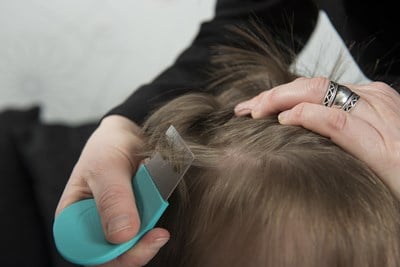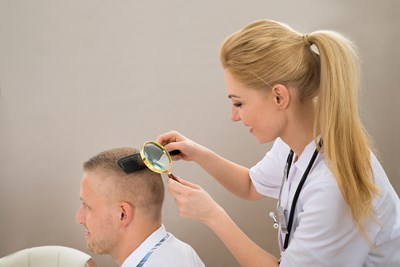Head lice are tiny insects that live on the scalp and feed on human blood. Head lice infestations typically only affect small children, so it is important for parents to know what signs to look for. Here is a look at the most common symptoms.
- Itching: The most common symptom of a head lice infestation is excessive itching on the neck, ears, and scalp. This is because of an allergic reaction to the saliva of the lice. It is common for itching not to occur for up to six weeks after the infestation begins.
- Lice on scalp: This symptom is the most difficult to spot because the lice are so small, they avoid light, and they move very quickly.
- Nits on hair shafts: The eggs of lice are called nits and they are easier to spot because they will stick to hair shafts. Empty eggs are the most visible because they are lighter in color and will be further from the scalp. They are frequently found around the ears and along the hairline of the neck. The incubating nits may be more difficult to see because they are extremely small and will camouflage to match the hair color. It is important to keep in mind that the presence of nits does not necessarily mean that there is a current infestation, as they could be left over from a previous one.
If you suspect that you or your child has a head lice infestation, see your doctor before administering treatment. This is because it is very common for children to be treated for head lice using over-the-counter medications or home remedies when they actually do not have a head lice infestation at all. It is really easy to mistake other things for nits and lice, including dead or empty nits from a previous head lice infestation, residue from hair products, scab tissue, dead hair tissue, dandruff, dirt, or other debris.
Risk Factors for Head Lice
It is very easy for head lice to spread from person to person via direct contact since head lice can only crawl, not fly or jump. This is why transmission is more likely to occur within a family or between children who are playing together at school or other places.
Though it is less likely, head lice can be transmitted by indirect contact as well. Lice are able to spread from person to person via items like hats, scarves, brushes, combs, headphones, pillows, towels, and upholstery. This can happen either by two people sharing these items, or as a result of items being stored together. An example would be a coat rack where hats or scarves are hung together on the same hook, or if personal items are stored in the same school locker.
In order to ensure that head lice outbreaks do not occur, check your child regularly for any signs of a head lice infestation, and advise them to try to keep their own personal items as separate as possible from other children’s things.



